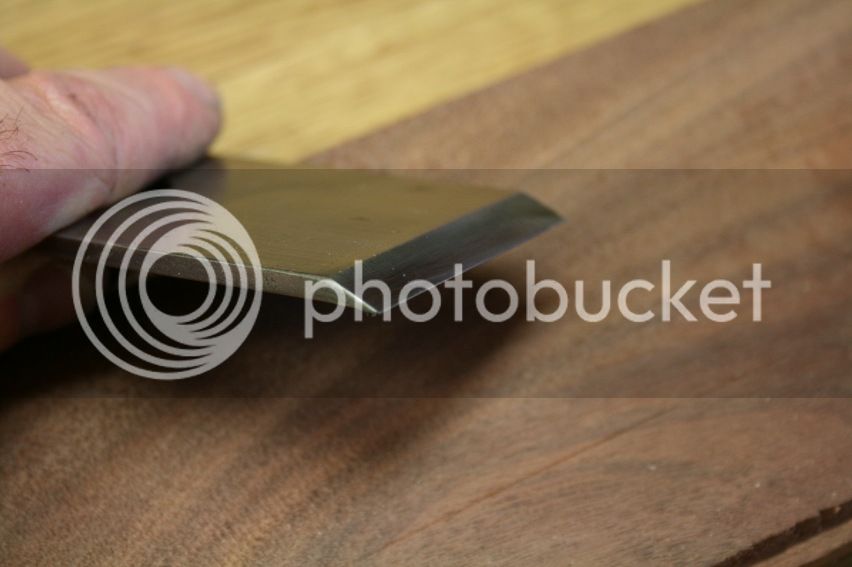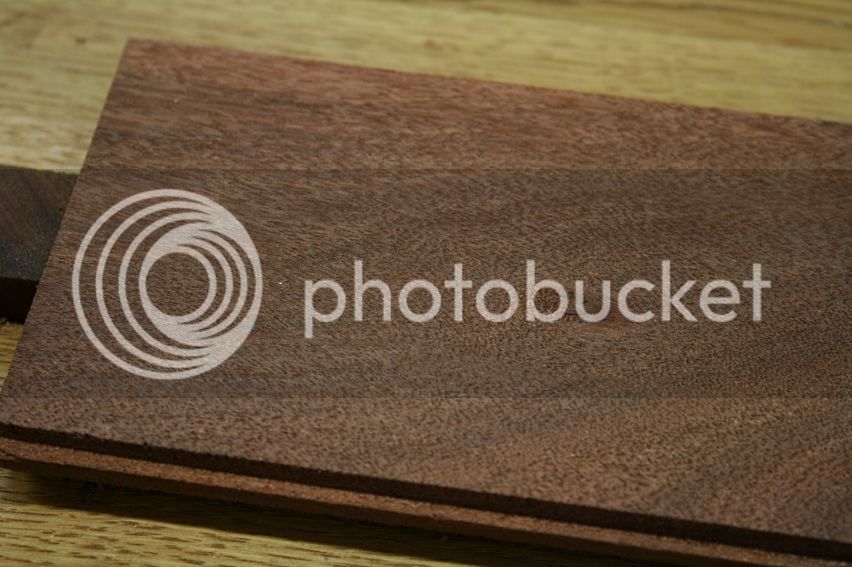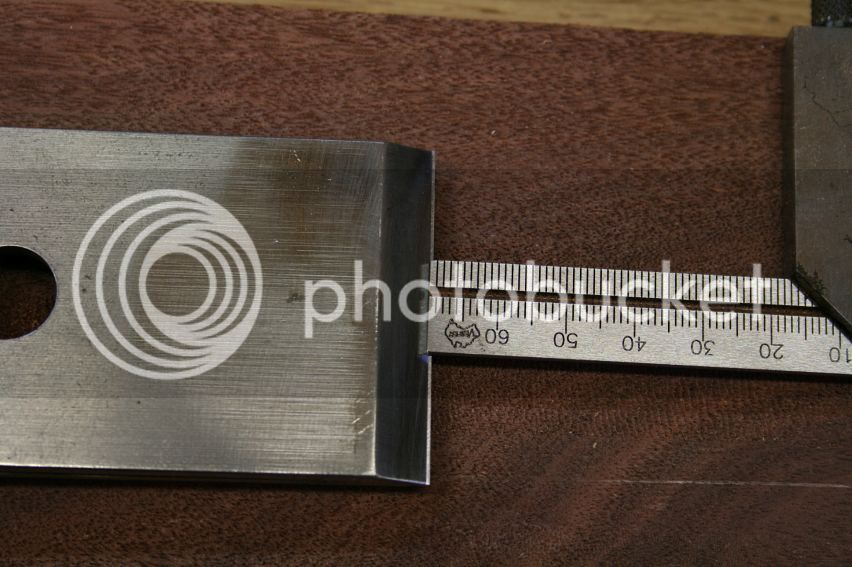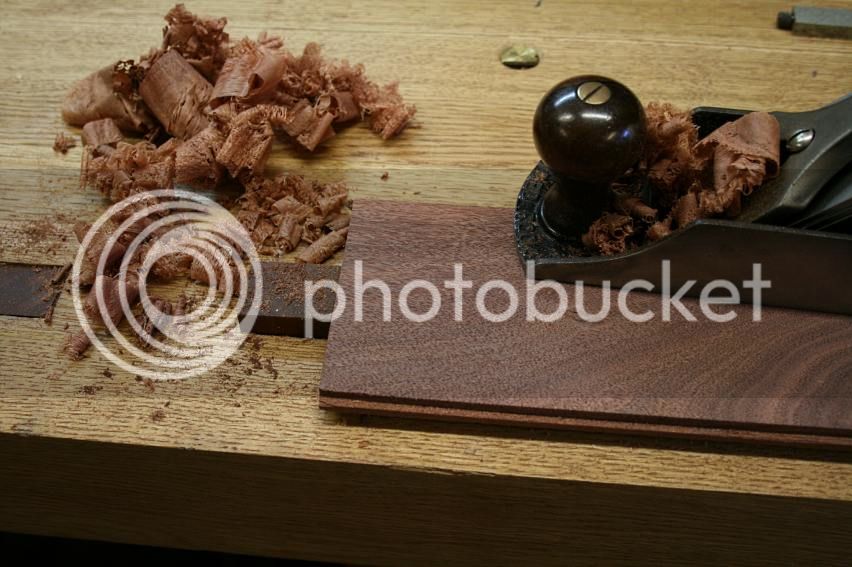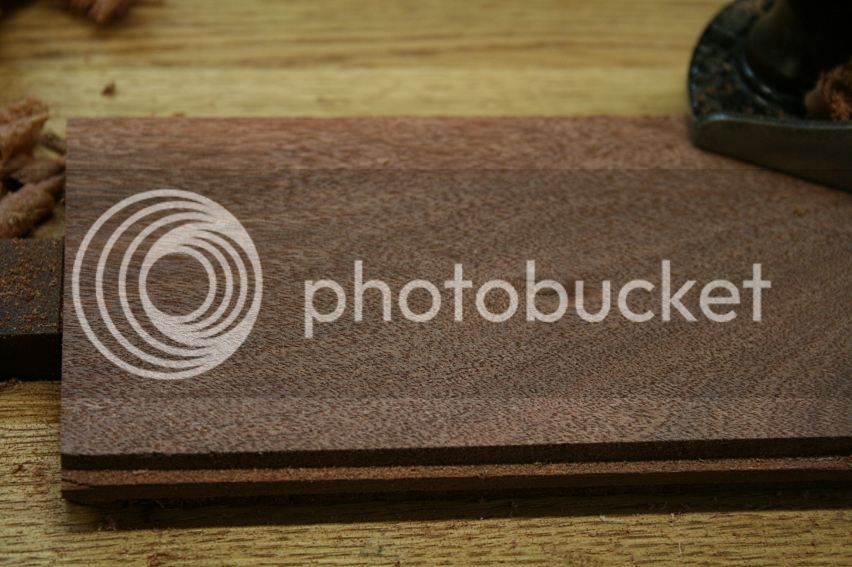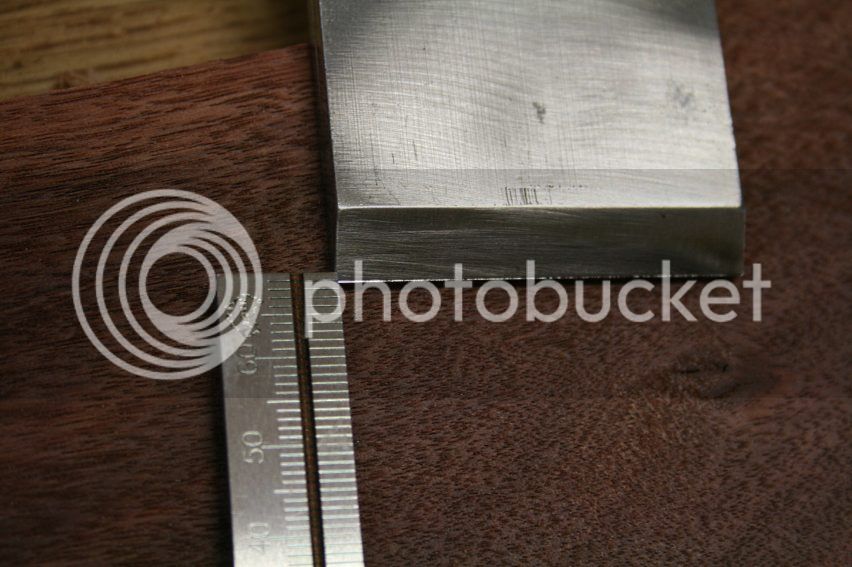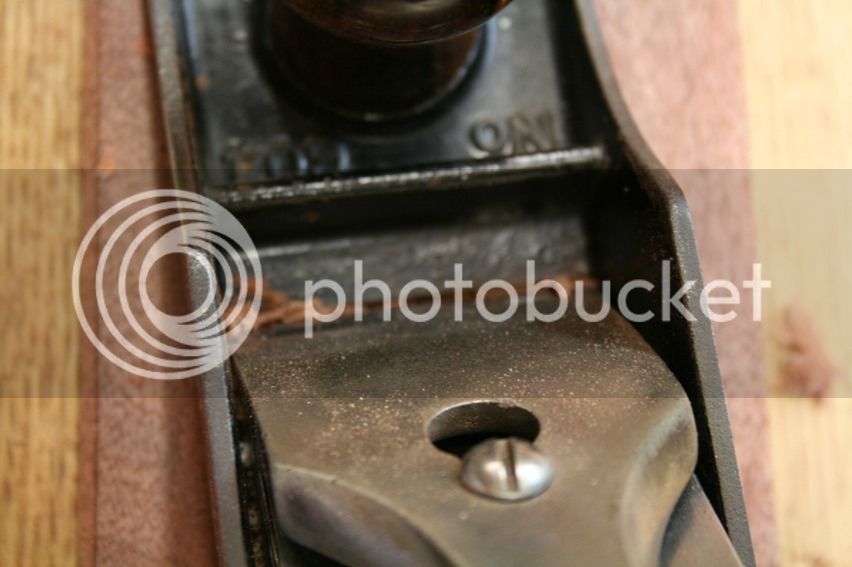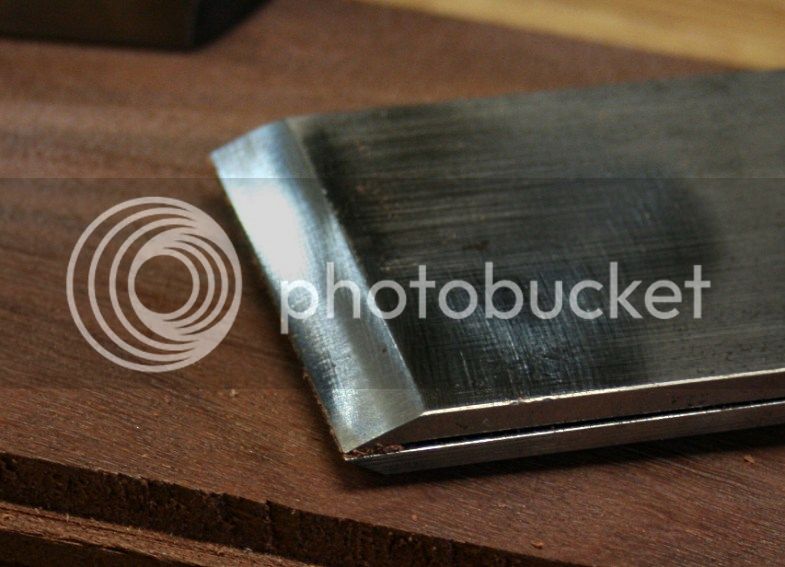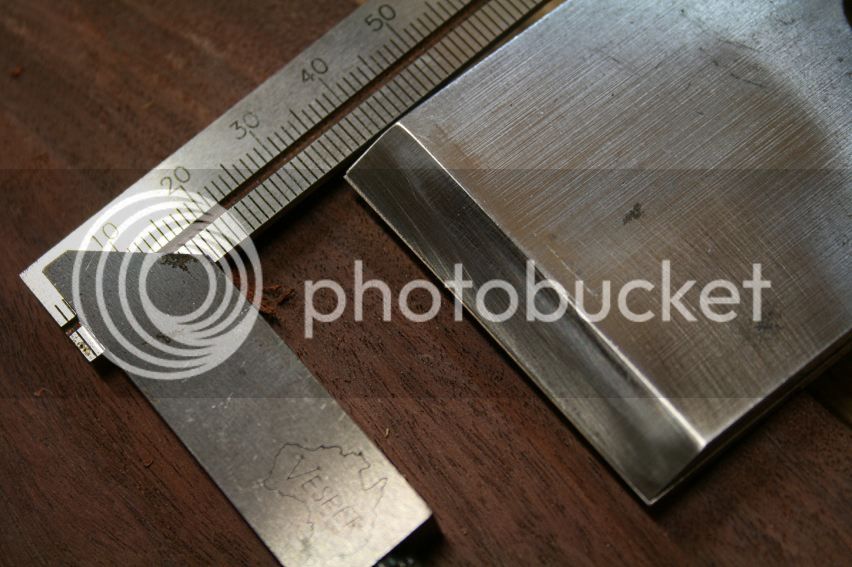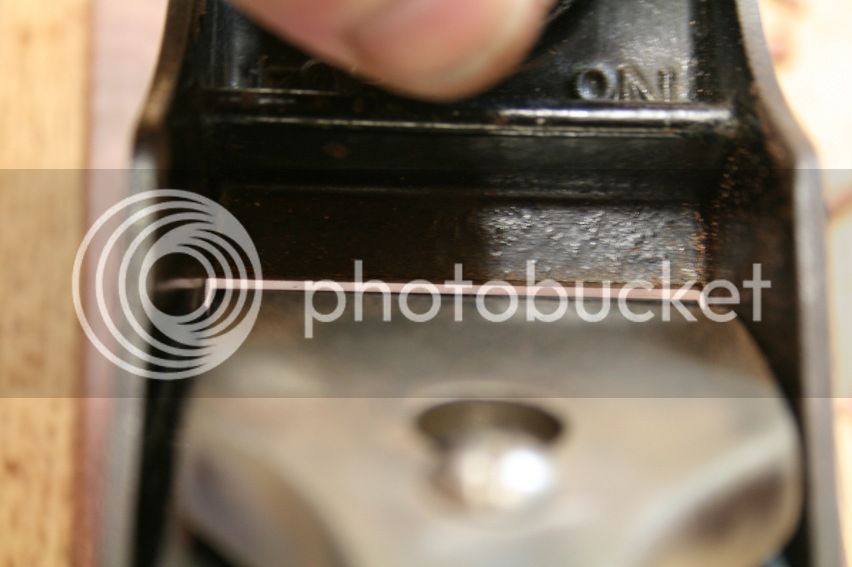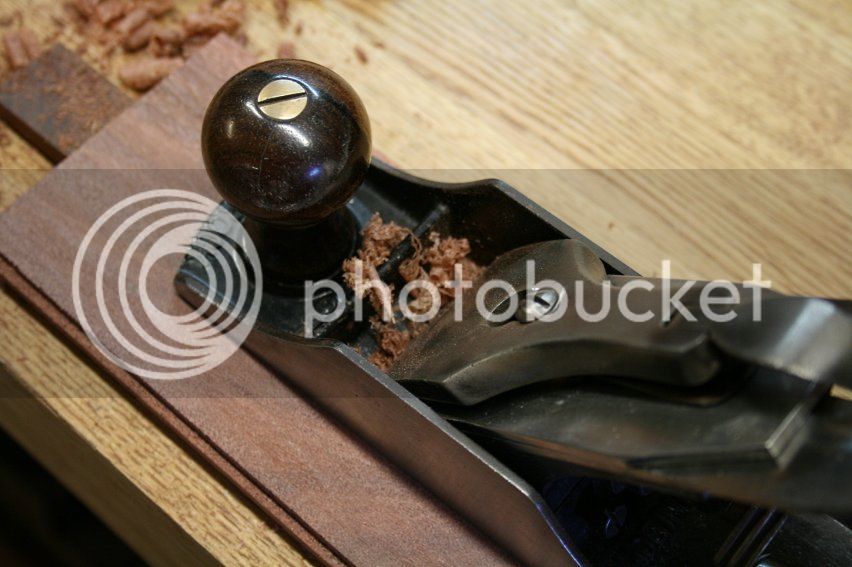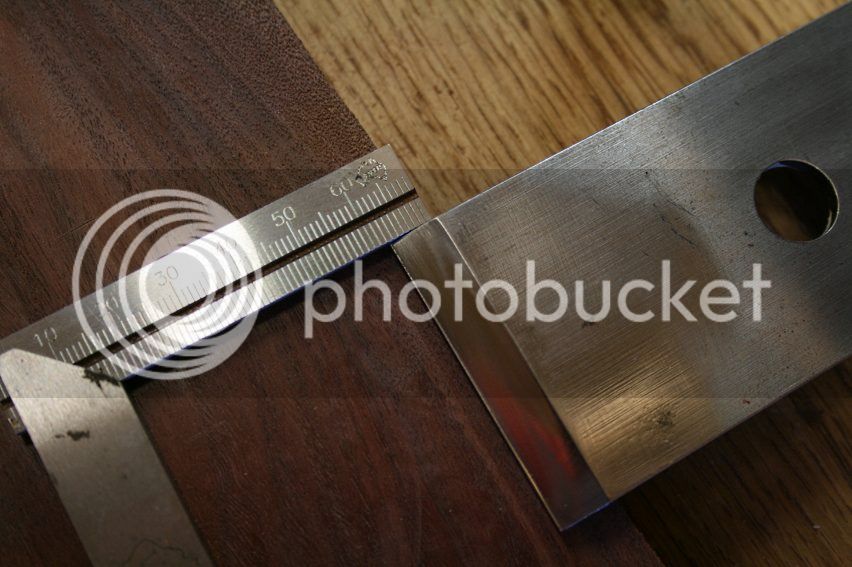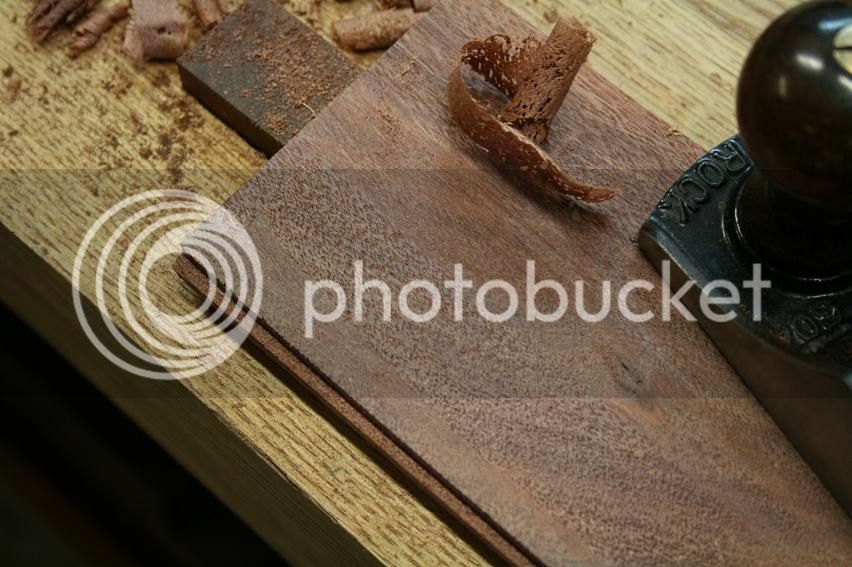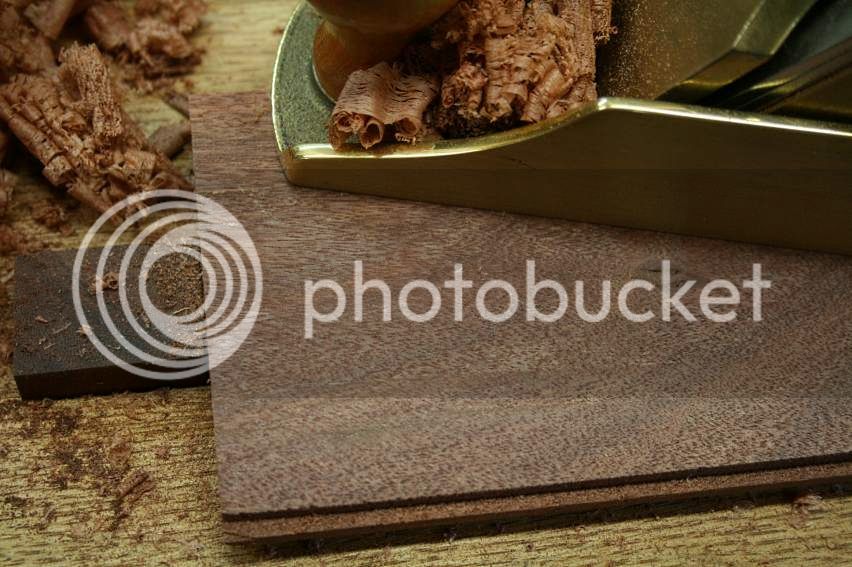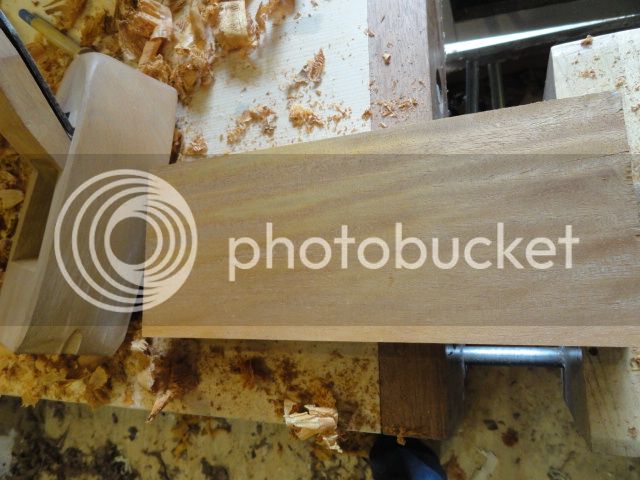OK, once more back into the fray dear friends, once more ...
This time with pictures.
I elected to use a Bed Rock #604. This has a LN Chip Breaker and a M4 blade honed to 13000 on a Sigma. Let no one criticise the components!

The chip breaker was given a microbevel of around 70-80 degrees ..
This is the Jarrah surface I am trying to tame. It looks worse here since it was last planed by the Stanley #3 in the abortive last effort.
For the first effort with the #604 - call it a baseline - I set the chip breaker at about 0.4 - 0.5mm, which is typical of my usual position.
The shavings were nothing spectacular and nor was the wood surface (I would not usually use this plane on this wood), but it was an improvement over the Stanley #3 ..
Soooo ... now the chip breaker was repositioned at about 0.2mm ...
... and I started planning, waiting for the smooth surface to appear ... but it was a major anticlimax as the mouth clogged ...
OK, here's the culprit ... the chip breaker is not absolutely flush (although I did smooth it on a fone diamond stone.
Back to the waterstones.
This is the only chip breaker in existence that is honed to 13000 grit!
The mouth has clearance ...
But in spite of all this, the plane would not make shavings!
So I pulled the chip breaker back again ..
... and took a slightly deeper shaving than before. Now you see why I do not do this with Stanley planes ...
It is not a pretty sight. Sigh.
OK, out came the LN with a 55 degree frog I used before. Keep in mind that the Veritas SBUS, with a 62 degree cutting angle, produced a better finish yesterday.
The finish is clearly better to the touch.
There needs to be a summing up of the three experimental sessions: I think that the bottom line is that I just cannot get the chip breaker effect on this piece of Jarrah. By contrast, I was able to achieve a better finish with a 55 degree LN #3, and decent finish with a Veritas SBUS with 62 degree cutting angle. Perhaps some types of wood will not respond to changes of chip breaker projection, and the case for high cutting angles remains the alternative?
Regards from Perth
Derek





